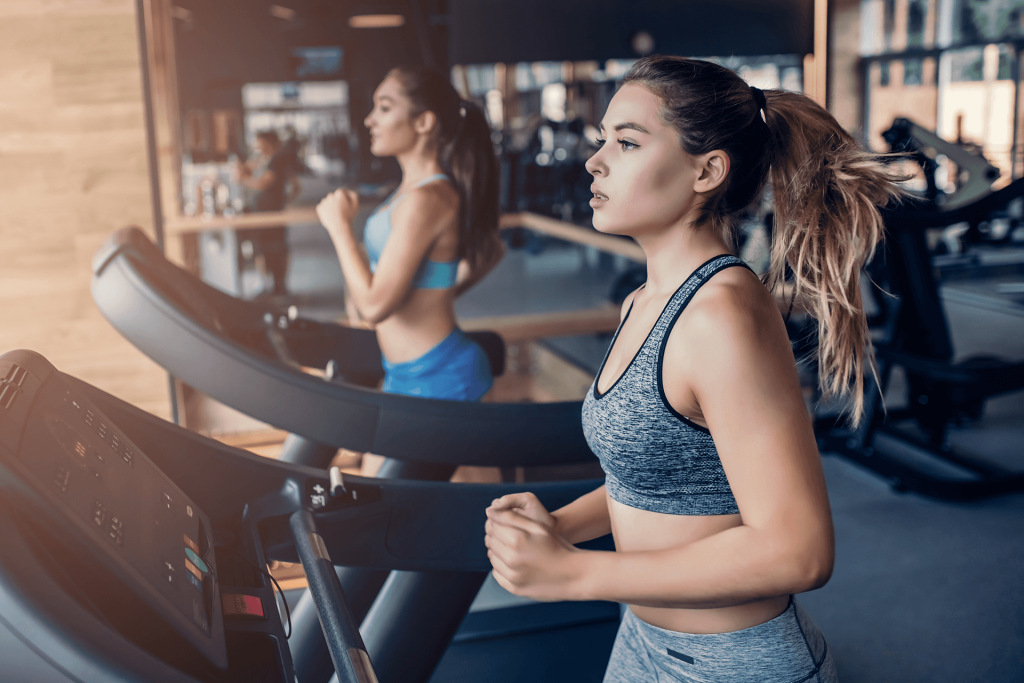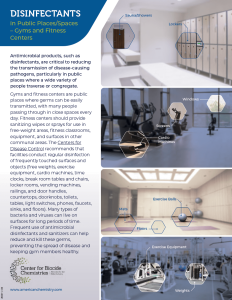 Disinfectants play a crucial role in supporting hygiene and safety in gyms as these environments can harbor various germs and bacteria due to the high level of physical activity and shared equipment. For instance, the Centers for Disease Control and Prevention (CDC), explains that Methicillin-resistant Staphylococcus aureus (MRSA) spreads easily in athletic facilities, locker rooms, gyms, and health clubs because of shared equipment and skin-to-skin contact. Using Environmental Protection Agency (EPA)-registered products that are effective against MRSA can help remove it from surfaces.
Disinfectants play a crucial role in supporting hygiene and safety in gyms as these environments can harbor various germs and bacteria due to the high level of physical activity and shared equipment. For instance, the Centers for Disease Control and Prevention (CDC), explains that Methicillin-resistant Staphylococcus aureus (MRSA) spreads easily in athletic facilities, locker rooms, gyms, and health clubs because of shared equipment and skin-to-skin contact. Using Environmental Protection Agency (EPA)-registered products that are effective against MRSA can help remove it from surfaces.
Disinfectants in Gyms
Proper disinfection practices can help reduce the risk of infections and ensure the safety of gym members. Here are some key considerations regarding disinfectants in gyms:
-
- Proper Disinfecting Frequency: Gyms should have a regular disinfection schedule, with an emphasis on high-touch areas like doorknobs, handrails, and equipment. Ideally, high-touch surfaces should be disinfected frequently.
- User Responsibility: Gyms should provide disinfectant wipes or sprays for users to disinfect equipment before and after use. Gym members should use these materials and wipe down equipment to help reduce the spread of germs.
- Staff Training: Disinfectants require a certain amount of time to be effective. Gym staff should be trained in proper disinfection procedures, including the correct use of disinfectants, the appropriate contact time for disinfection, and safe disposal of products.
- Safety Measures: Help inform gym members about the safety measures in place, such as the use of disinfecting protocols. This can include signage, verbal reminders, and written instructions.
- Product Compatibility: The disinfectants used should be compatible with the materials and surfaces in the gym to avoid damage to equipment or fixtures.
- Waste Disposal: Proper disposal of disinfectant wipes is important to help prevent the spread of pathogens. Designated bins for disposing of used wipes and materials should be provided.
In summary, effective disinfection in gyms is vital for maintaining a clean and safe environment. It is essential to follow best practices, manufacturer recommendations, and guidelines from relevant health authorities to help ensure the health and safety of gym users.
Disinfectants in Public Places Campaign Infographics
The Disinfectants in Public Places campaign helps raise awareness about disinfectants used in public places. Our gyms infographic highlights some places where disinfectants are used in gyms. Among the numerous unique environments where disinfectants are used in gym settings are:
-
- Exercise Equipment Rooms: Screens, Tables, Window Handles, Doorknobs, Seats, Floors, Cardio Machines, Weights
- Gym Bathrooms: Toilets, Sinks, Countertops, Floors, Sauna/Showers, Lockers
- Fitness Rooms: Exercise Balls, Mats, Floors
- Reception/General Areas: Vending Machines, Light Switches, Phones, Tables, Chairs



